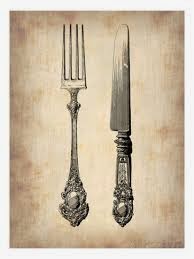When you have your food, don’t hesitate about beginning to eat. Old-fashioned people wait until all are served before eating, but it isn’t strictly correct to do this. Of course, if you happen to be one of a home party, where you are passing vegetables to others, you would naturally see that you had done your part before beginning to enjoy your own share of the meal. —A Theodore Haviland patent design for a plate of the era.
A Few Don’ts For the Table
Here are a few valuable “don’ts” for the table; they are worth remembering:
- When your hostess passes you a plate, don’t offer to pass it on to another person. Take what your hostess intended for you.
- And when you have your food, don’t hesitate about beginning to eat. Old-fashioned people wait until all are served before eating, but it isn’t strictly correct to do this. Of course, if you happen to be one of a home party, where you are passing vegetables to others, you would naturally see that you had done your part before beginning to enjoy your own share of the meal.
- Don’t take a second “helping” of soup or fish if you are going through a meal of several courses.
- Never cut your bread. It should he broken on the cloth or the plate that may be provided, and broken without raising it from the table.
- Don’t shake salt over your food. Salt and mustard should be placed on the side of the plate.
- For the sake of your neighbors, don't stick out your elbows when dining. People who have acquired this very bad habit should practice until they find another angle. When manipulating food on the plate, use the hands from the wrist, not from the elbow's.
- Here are the distinctive glasses used for particular wines : For those of the sparkling variety, we use a very broad and shallow glass; for Burgundy and claret, large goblet shaped glasses are correct; Sherry and Madeira require ordinary wine glasses, but port is poured into somewhat larger bell shaped glasses ; green glasses are used for hock. — San Francisco Call, 1916
Etiquette Enthusiast, Maura J. Graber, is the Site Editor for the Etiquipedia© Etiquette Encyclopedia








